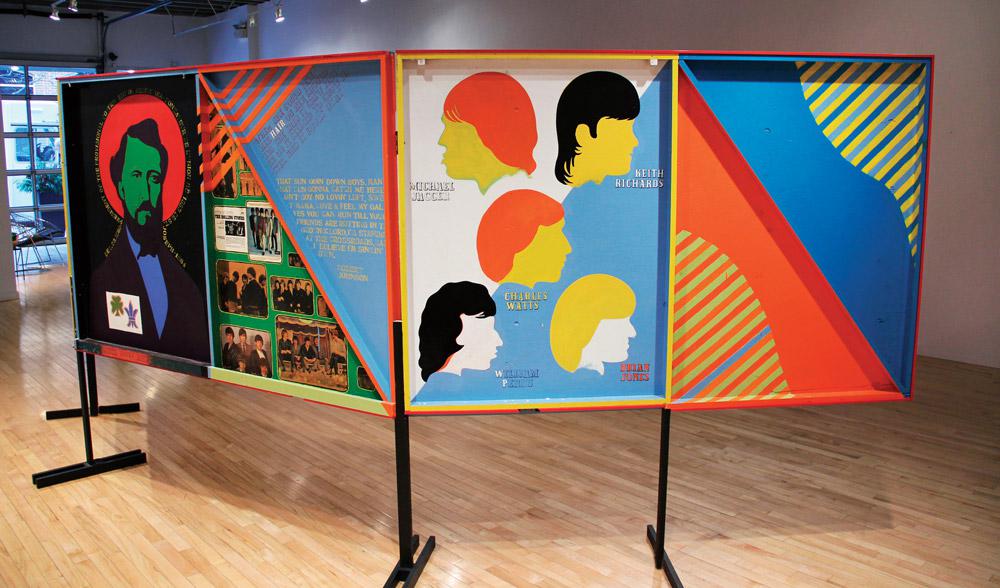Sheila Curnoe was having friends over this past fall when she hauled out Three Pieces, the 1965 Greg Curnoe painting that re-emerged into the world at Michael Gibson Gallery in London, Ontario, this winter. For many, the work was an amazing rediscovery.
Not for Sheila, though. “It never occurred to me to think of Three Pieces as a mystery,” she says, “but I suppose it is to people who are not aware of its existence.” The central panel of the hinged, billboard-like work had been hanging in her living room for several years before its counterparts came out of the studio where they were housed.
Last fall Gibson showed Curnoe’s 1964 series Sheila’s Legs I, II, III, IV at Art Toronto, and was planning a show of other 1960s work by the artist when he learned of the resurrected artwork. “This was the first time we’d seen all the parts together, and the paintings are just way over the top!” he says.
A reclining Sheila is the subject of each panel, her abstracted figure blocked in against the competing colours and patterns of bedding. Curnoe has a reputation as a bold colourist, but there are moments of unquestionable subtlety in the work, like in the faded, stencilled “YES” in the bottom corner of the leftmost panel that beckons viewers closer. Equally enticing are the vivid mixed-media backs of the paintings, which document major happenings of the early 1960s. Part fandom, part burgeoning global awareness, we see the Rolling Stones, a portrait of Metis leader Louis Riel and a news-clipping of students meeting with the Cuban ambassador to Canada.
Putting the work back together was one thing; tracking its history was another. It was no easy task. Sheila Curnoe vaguely remembered it being shown at the London Regional Art Gallery (now Museum London), but none of Curnoe’s living colleagues could recall the work. No written record of it was to be found in Curnoe’s papers and archival research at the Art Gallery of Ontario also turned up no leads. Other than a mention of the freestanding painting in the July 1966 issue of Canadian Art, it was a work without a past.
For its new showing, Gibson, with the help of carpenter Paul Vandeborne, mounted Three Pieces with sturdy black bars for supporting legs. Curnoe’s bold colour and pattern produce an optical back and forth that provokes a sense of discovery and plays against the minutiae of the everyday. Sheila remembers posing for the paintings with great fondness. “Greg used to play the most beautiful music while he was working on these images,” she recalls. “It was early jazz from the ’30s, and it was just beautiful. Not discordant. It created this atmosphere that was just wonderful.”
Something of that atmosphere now lives again.
This is an article from the Summer 2014 issue of Canadian Art. To read more from this issue, visit its table of contents. To read the entire issue, pick up a copy on newsstands or the App Store until September 14.

 Greg Curnoe, Three Pieces (detail), 1965. Oil and enamel on Masonite and wood, 1.2 x 5.48 m. Copyright Estate of Greg Curnoe/SODRAC (2014). Courtesy Michael Gibson Gallery.
Greg Curnoe, Three Pieces (detail), 1965. Oil and enamel on Masonite and wood, 1.2 x 5.48 m. Copyright Estate of Greg Curnoe/SODRAC (2014). Courtesy Michael Gibson Gallery.







